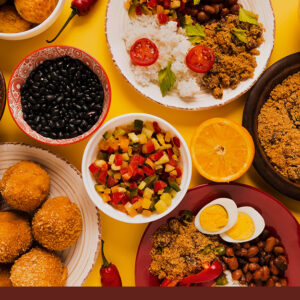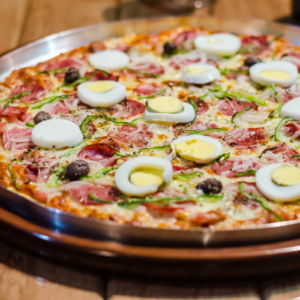Brazil Tradition Highlight: Japanese Influences
Table of Contents
Japanese Cuisine in Brazil
When most outsiders think of Brazil, Japanese cuisine is not likely the first thing that comes to mind. But Brazil is home to over 1.4 million individuals of Japanese descent-the largest population outside of Japan itself.

Unsurprisingly, Japanese cuisine features prominently in the food scene of Brazil. It is especially popular in São Paulo, which claims the largest number of Japanese Brazilians in the country. There are over 500 Japanese restaurants in São Paulo and, of its nine Michelin-rated restaurants, five are Japanese.
Japanese Brazilian Origins
The presence of Japanese cuisine in Brazil dates back to 1907 when the first immigrants were recruited to work on coffee farms. The Japanese were enticed with the promise of making their fortunes and then being able to return home.
This promise was hard kept, however, with realities like poor crop yields and a looming World War making the voyage home impossible. The thousands of Japanese immigrants who remained had to make do with a vastly different culture, language, food, and climate.
At first, familiar favorites were difficult to find or too expensive to enjoy. Rice was replaced with cassava and cornmeal, while traditional fruits and vegetables were substituted with papaya and other local commodities.
Eventually, Japanese immigrants began to cultivate and manufacture their preferred ingredients while simultaneously introducing various traditional cooking techniques to the rest of the country. By the 1990s, Japanese cuisine had become a national favorite, touted for its balanced taste and health benefits.
Japanese Brazilian Food
While Japanese food in Brazil features familiar items like sushi and sashimi, tempura, and sticky rice, there are a few dishes that are unique to Brazil. As with any cuisine, it has been adapted to suit the various tastes and cultures found in an incredibly diverse area.
A popular installment in Sao Paulo, for example, is the Temakeria. This is a Japanese spin on the taqueria. Instead of tacos, temakerias serve temaki: cone shaped sushi rolls that can easily be consumed while walking. Brazilians love their street food, and this concept of “sushi-on-the-go” is a perfect example of how cuisine evolves with local preferences.
Another unique Brazilian spin on Japanese classics is the “hot roll.” Traditional maki rolls are breaded and fried for a crispy, crunchy outside.
A temaki cone, traditionally served at Temakeria’s in Brazil
Japan’s Legacy in Brazil
Japanese cuisine is symbolic of the lasting impact of Japan’s immigration to Brazil. The farming techniques used by the first immigrants to grow foods from home are still in use today and have shaped Brazil’s reputation as an agricultural powerhouse.
But cuisine is only part of the Japanese Brazilian identity. Descendants of the first coffee laborers represent all aspects of Brazilian culture: art, architecture, music, religion, dance, athletics, and more. Millions of Brazilians claim Japanese heritage, and it is central to the country’s identity as a whole.





